
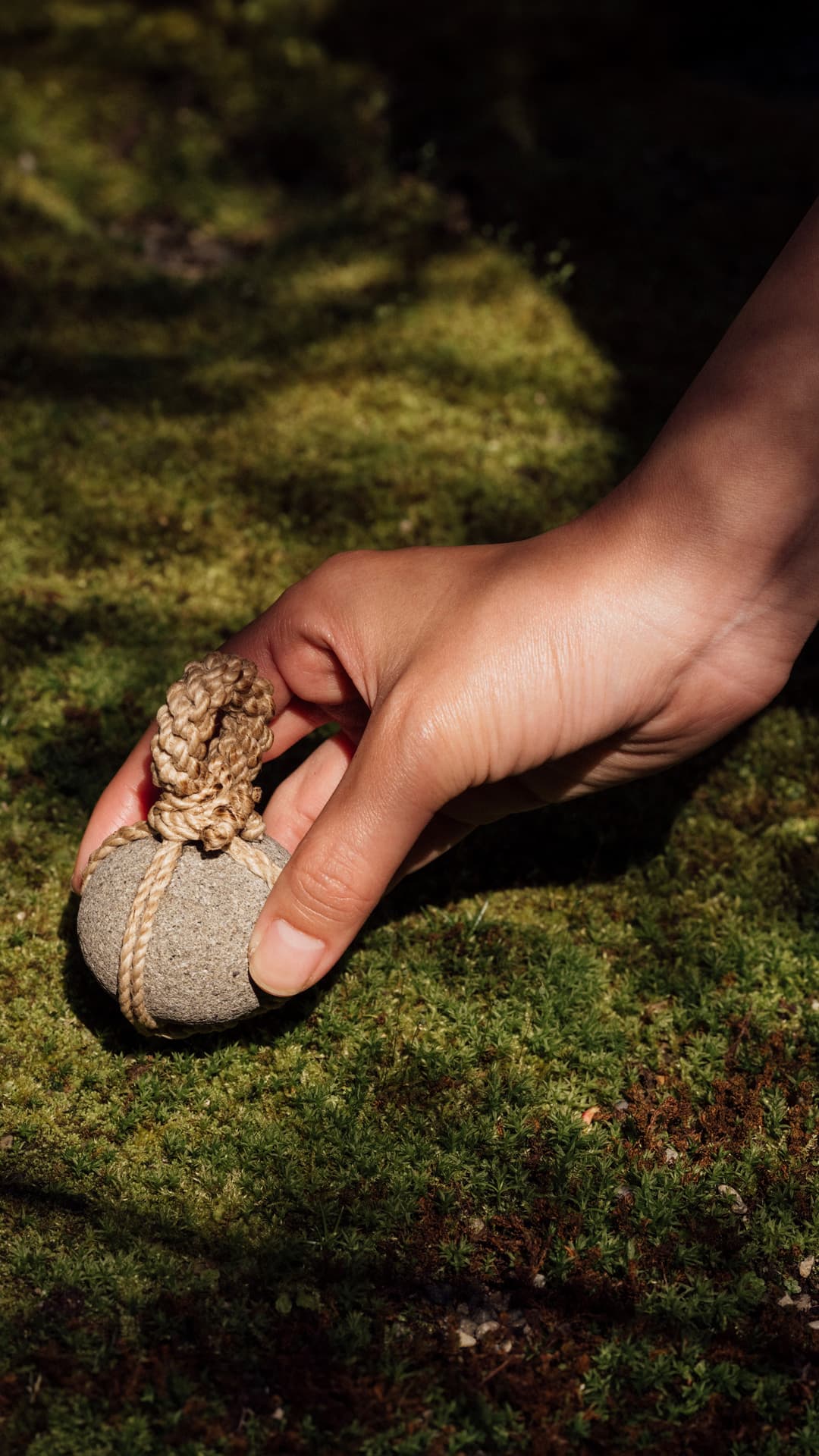
Listen
to Katherine Kennard
reading this story
SACRED BOUNDARIES
Kekkai Seki
Just off the coast of Futami, in Mie Prefecture, bordering Kyoto, two rugged rocks rise from the sea, waves gently crashing against them. Bound together by a thick ‘shimenawa’, a sacred rope made of twisted rice straw, these stones – one larger than the other – stand side by side, gazing eternally towards the horizon. This is Meoto Iwa, or the ‘Wedded Rocks’, symbolising marriage and union, while also acting as guardians of the boundary between the land and ocean. Most visitors come to photograph the sunrise framed between them, but to those in the know, they are ‘iwakura’ (磐座): natural rocks believed, in Shinto, to be the dwelling places of ‘kami’ (神), or spirits.
A similar quiet power lingers within the gates of Seimei Shrine in Kyoto’s Kamigyō ward, where a moss-flecked stone stands beside a small wooden torii. Encircled with a simple shimenawa, the stone silently witnesses visitors streaming past, with few pausing to wonder at its significance. Yet here, too, the stone behaves as a marker of something unseen, hinting that the space beyond belongs to a realm more sanctified than the ordinary.
Further north in Kyoto, towering pines surround Kamigamo Shrine, where the atmosphere grows even stiller. Before the shrine’s venerable halls are two elegant cones of white sand, each crowned with a small stone glinting in the dappled light. These are the ‘Tatezuna’, symbolically representing Mount Kōyama. Though Kōyama is the shrine’s single sacred peak, the paired Tatezuna reflect Shinto’s belief in harmonious balance – duality, such as male and female, heaven and earth. The stones atop them quietly signal that those who step closer are crossing into holy territory.
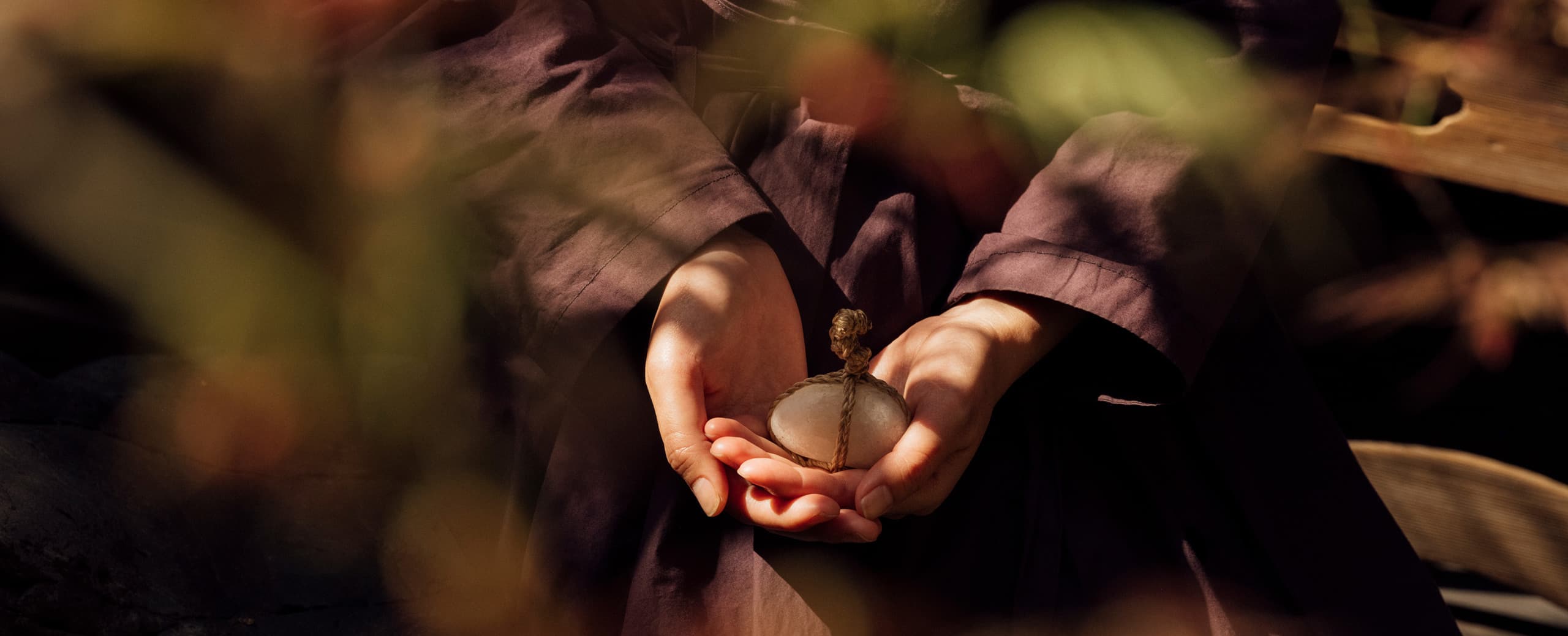
What these stones all share is a role far beyond their obvious physical form. They mark invisible boundaries – points where ordinary space transitions into sacred ground. In both Shinto and Buddhist traditions, stones like these are often known as ‘kekkai seki’. The word ‘kekkai’ (結界) means ‘to tie off’ or ‘to establish a boundary’, while ‘seki’ (石) means ‘stone’. Together, they refer to stones placed to define the edges of holy places – yashiro (社) in Shinto shrines, or temple precincts in Buddhism – repelling ‘kegare’ (穢れ), the spiritual impurities believed to disrupt harmony.
“There is a history of worshipping stones in Japan, or of feeling a mysterious presence. It is a history that holds respect for nature, symbolised by mountains and rocks.”
TOSEI SHINABE
“There is a history of worshipping stones in Japan, or of feeling a mysterious presence,” says Tosei Shinabe, a Buddhist Zen monk based at Kyoto’s Zen temple. “It is a history that holds respect for nature, symbolised by mountains and rocks.
These were generally large stones or rocks with strange and symbolic shapes. Various other natural objects were also respected and revered as part of animism.”
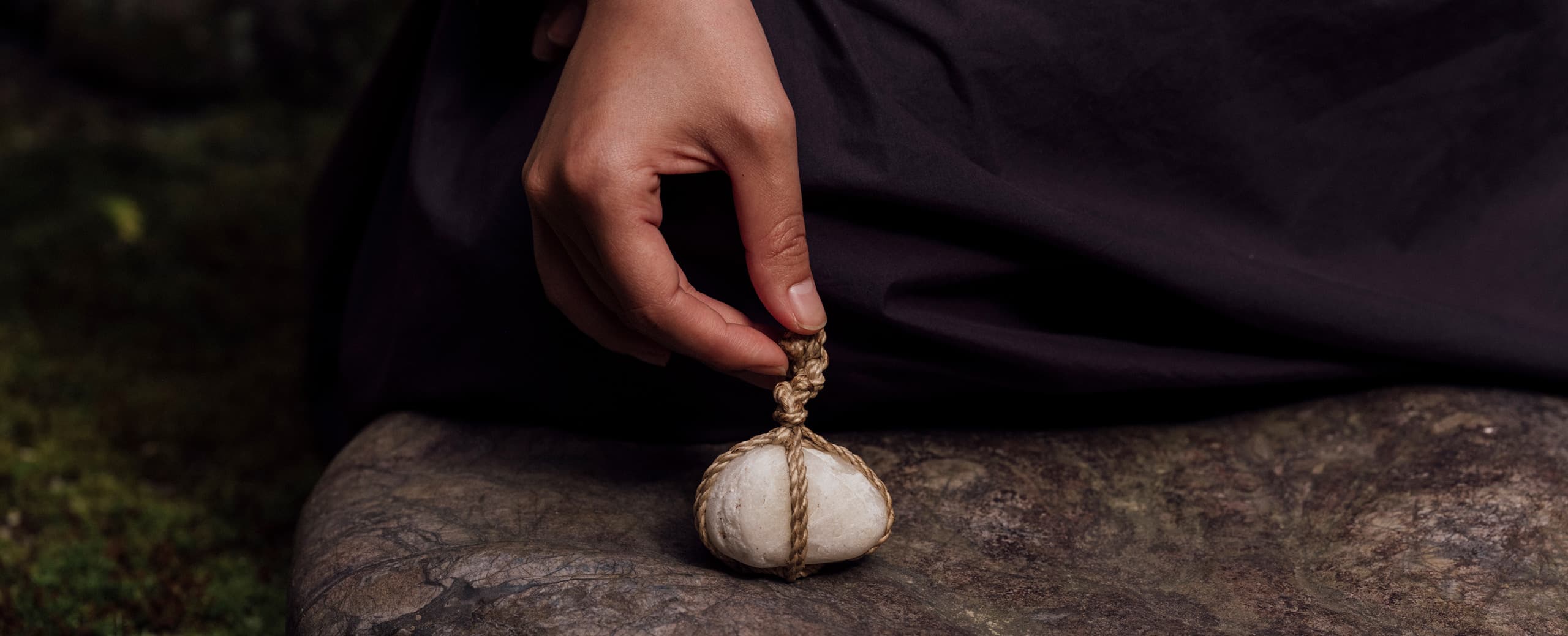
Animism, humanity’s oldest known spiritual belief system, arose in prehistoric times, long before written records. It holds that spirits or sacred forces dwell in natural objects and places – rocks, trees, rivers, mountains, even the wind – and in Japan, it laid the groundwork for Shinto, where such elements are seen as the dwelling places of kami. “Before the distinctions of Shinto or Buddhism were made,” Tosei explains, “it was a belief, or a kind of indigenous faith, that nature sustains us, that it keeps us alive – and for that we show reverence. After all, people are just part of nature. The object of that faith was rooted in Japan, with elements of Shinto and Buddhism mixed together, although it has evolved over time to integrate with the local culture.”
Kekkai seki blends this ancient concept with a tangible marker. In Shinto shrines, kekkai seki appear at key boundaries – near torii gates, beside pathways or tucked discreetly into corners. They are sometimes bound in braided rope, adorned with folded white paper streamers or placed beside small hokora (祠), miniature shrines honouring local spirits. With the arrival of Buddhism in the 6th century, the idea of the kekkai blended seamlessly into a broader spiritual landscape. This syncretism, known as shinbutsu shūgō (神仏習合), meant that kekkai seki appeared in Buddhist temples as well, defining ritual areas and sacred precincts.
“In Shinto, hemp ropes are important for rituals. You see it in sumo, too – the yokozuna wears a huge hemp rope as a sign of rank and purity. I wanted the materials I use to create za kekkai to carry meaning; and hemp symbolises Japan.”
TOSEI SHINABE
Tosei’s connection to kekkai seki is deeply personal. In his temple in Kyoto, he crafts his own stones as part of a ritualistic practice intertwined with his primary work teaching Zazen – the seated, mindfulness-focused meditation central to Zen Buddhism. It was this meditative discipline that inspired him to create ‘za kekkai’, as he calls them. “Zazen, or Zen, still falls into the category of religion,” he explains, “but it’s more of a philosophical or conceptual discussion, which might seem too abstract and difficult to approach. So my intention, or hope, is for my stones to serve as an entry point to Zazen – something tangible as a gentle trigger of interest and an accessible way in. That’s why I created the stones. However, they can symbolise many things, and you can add many concepts to this simple form.”
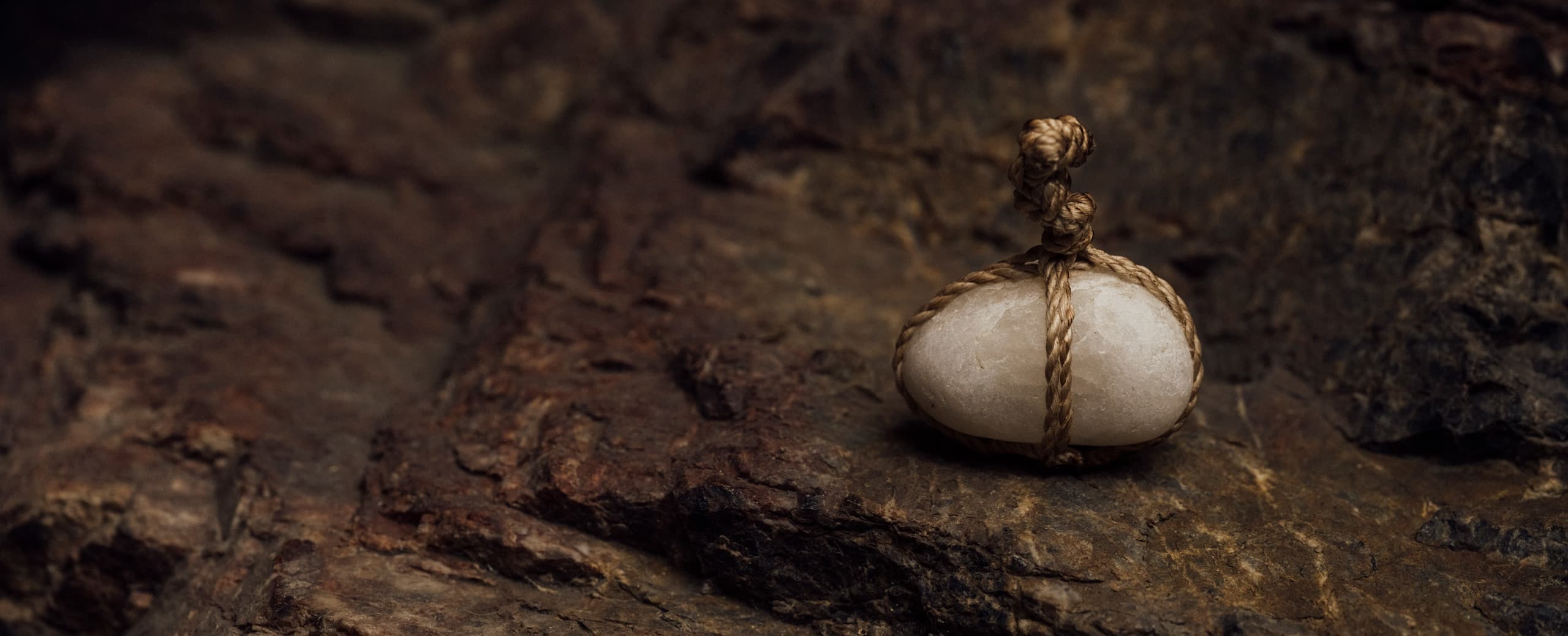
Woven with fine, blonde-coloured hemp, which is grown locally, the ‘seima’ rope is braided by hand by Tosei himself before he binds each stone with a length of it. His decision to use hemp is deliberate, due to its significance in Japanese history. “People hear the word ‘hemp’ and think marijuana,” he says, “but in Japan, hemp has always been a traditional material.” Until the Second World War, Tosei continues, there were no strict laws about growing it – it was used everywhere, like rice. People wore clothes made from it and fashioned it into ropes; nothing went to waste. “In Shinto, hemp ropes are important for rituals. You see it in sumo, too – the yokozuna wears a huge hemp rope as a sign of rank and purity. I wanted the materials I use to create za kekkai to carry meaning; and hemp symbolises Japan.”
For Tosei, the meaning woven into them is twofold, extending beyond hemp and into the source of the stones. He collects them from Awaji Island – partly because his wife comes from there, and partly because of the island’s powerful symbolism as the birthplace of Japan. Located in the Seto Inland Sea between Honshu and Shikoku, Awaji holds a special place in Japanese mythology. According to the ancient chronicle ‘Kojiki’, the deities Izanagi and Izanami stood on the heavenly bridge and stirred the sea with a jewelled spear. When they lifted it, drops fell and formed Awaji, the first in the Japanese archipelago. “Beautiful stones can perhaps be found all over the world, on any roadside, any mountain, or any seashore,” Tosei says. “What’s special about Awaji is that in Japanese mythology, it’s said to be the place where Japan began. It’s just a story, but it’s very symbolic.”
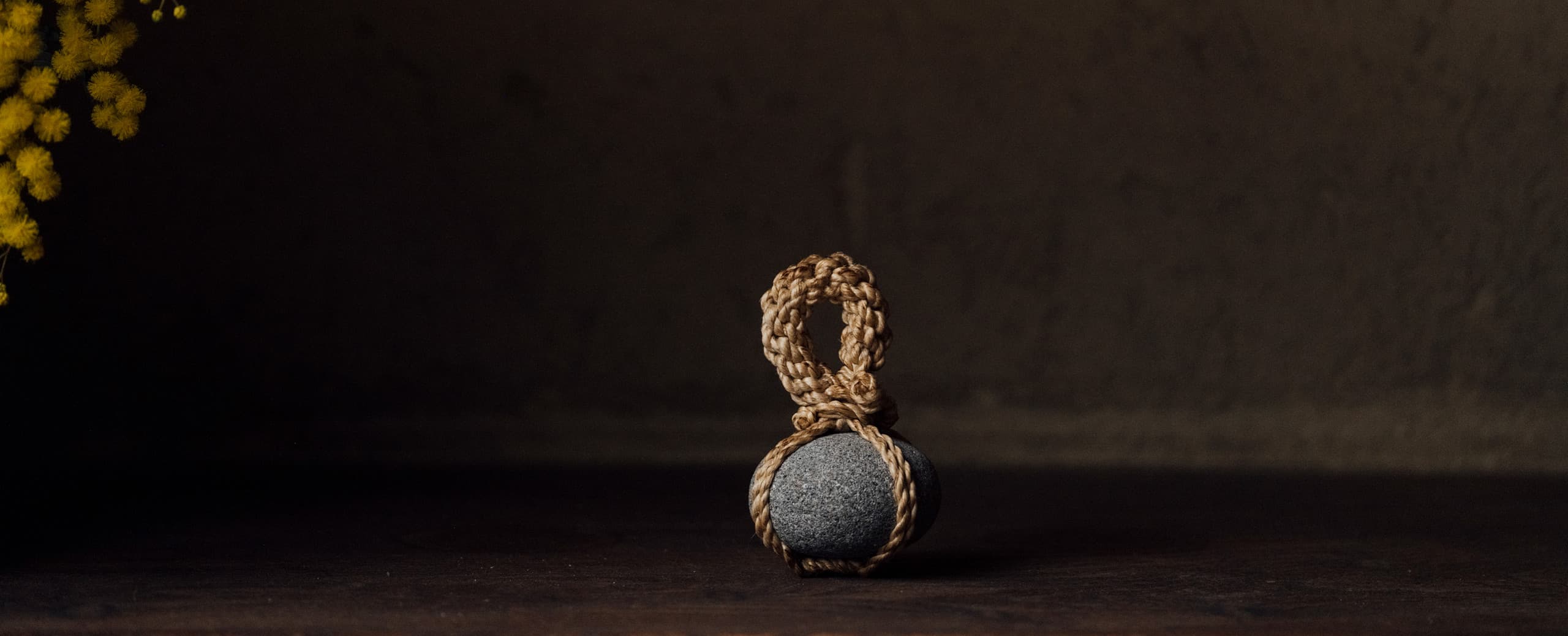
The beauty of kekkai seki lies in their simplicity. Tosei insists that there’s no hidden ritual in the act of binding them with rope; it’s simply about securing string to stone. Yet he acknowledges that tying a rock transforms it – a simple, ordinary object suddenly takes on new meaning. He resists layering it with too much mystical symbolism or overcomplicating the gesture. What he cherishes is how something as humble as a stone, rolling unnoticed in the world, can become significant through a small act such as binding it with rope. “I love this simplicity,” he says, “and I don’t want to manipulate it too much. I just want to give it meaning, and hope someone notices.”
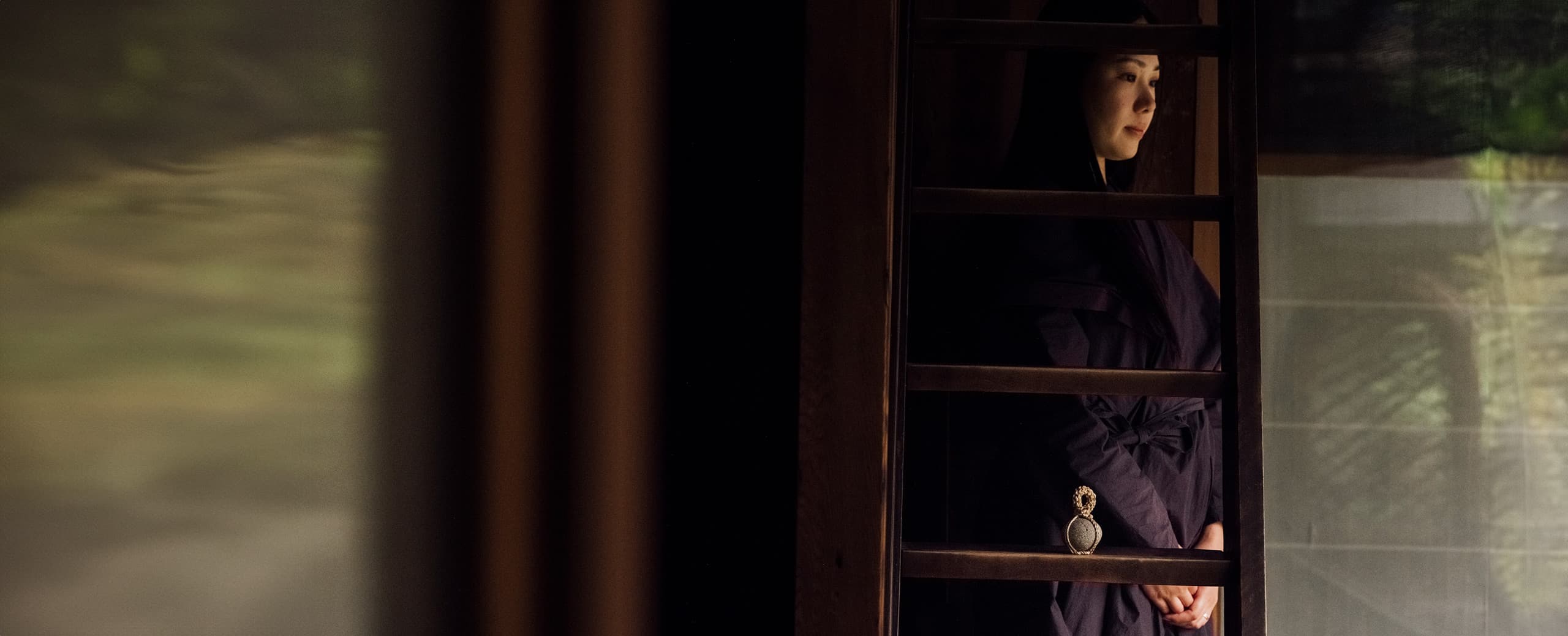
Historically, as the centuries passed, Japanese aesthetes began to see stones not only as sacred but as artistic focal points. Nowhere is this more evident than in the gardens of Zen temples. The stark beauty of a Zen garden – raked gravel, precisely placed rocks, carefully clipped moss – reflects a philosophy of simplicity, impermanence and contemplation. In this world, a stone becomes a world unto itself, a place where mind and spirit come to rest. This is the realm of shinseki (神石) – divine stones chosen for their shape, texture and presence. They’re placed with precision, guiding the viewer’s gaze and spirit through a landscape of silence. The concept of the kekkai persists in garden design as an invisible border. Stones are used to ‘cut off’ spaces, define hidden paths or signal a transition from the outer world to the inner, meditative core.
The Japanese “find aesthetic pleasure not merely in beauty, but in the suggestion of the sacred.”
DONALD KEENE
In the book ‘The Pleasures of Japanese Literature’, author Donald Keene observes that the Japanese “find aesthetic pleasure not merely in beauty, but in the suggestion of the sacred.” Kekkai seki embody this principle perfectly: they are subtle, modest, yet heavy with unseen meaning.
While Japan today can often feel dazzlingly modern, the quiet presence of kekkai seki has not disappeared. Instead, these stones have found new roles, evolving to fit contemporary life. In high-end interiors shops in Tokyo, for example, you might come across small, polished stones labelled as ‘power stones’ – modern echoes of kekkai seki. Believers say they protect homes, promote good fortune, guard against harmful energy or serve as symbols of gratitude towards nature.
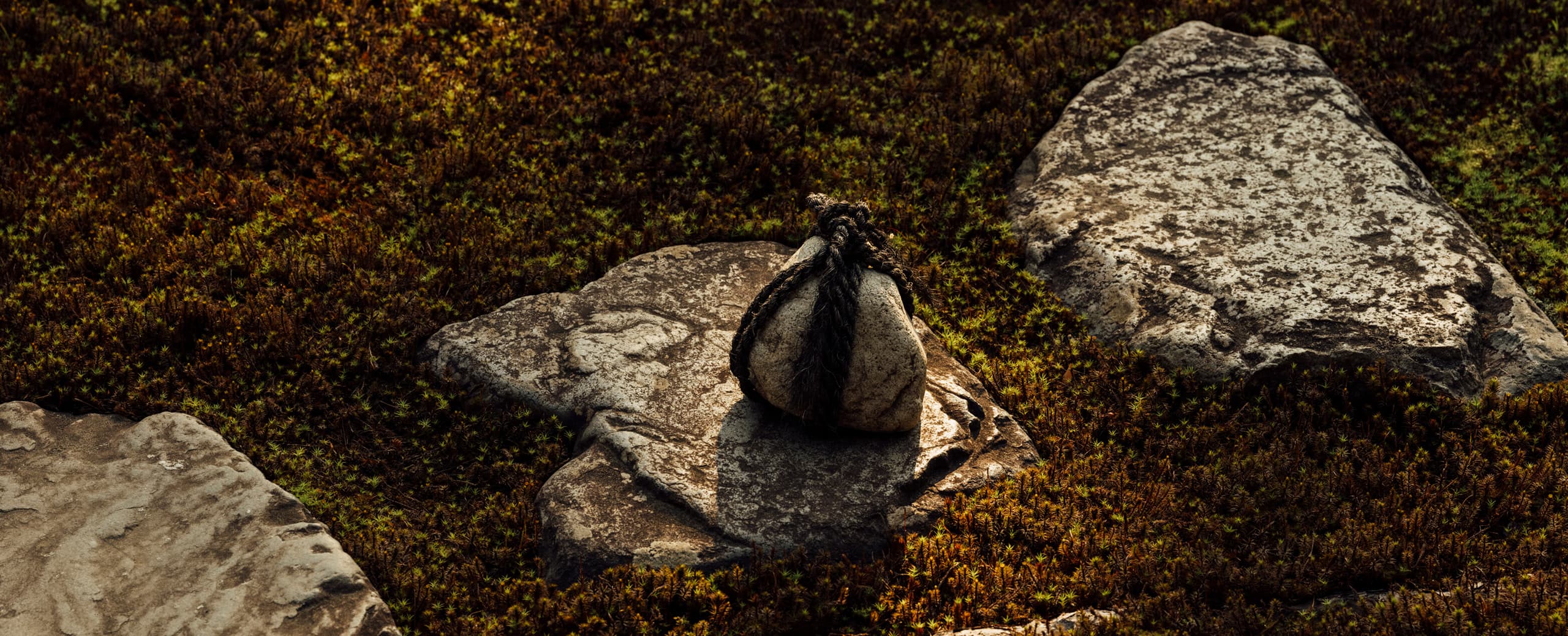
“You can imbue a stone with any concept you want,” Tosei says. “Some people may wear them as protective talismans or amulets created by monks. It’s their choice. Eventually, it will return to being just an ordinary object as the rope unties. The concept is about constant change, known as impermanence in Buddhism. It can serve as a reminder that everything is constantly changing – a symbolic object representing nature’s sensitivity.”
Meanwhile, artisans across Japan have embraced kekkai stones as both art and craft. Some carve symbols into them for use in rituals. Others incorporate them into Zen-inspired décor – minimalist displays meant to bring a fragment of sacred space into the modern home. Japanese gardens, too, continue to deploy the principle of the kekkai. Contemporary landscape architects use stone placement to subtly guide visitors, shaping how people move, pause and perceive space. Even in sleek urban parks, stones mark unseen thresholds between the rush of city life and moments of stillness.
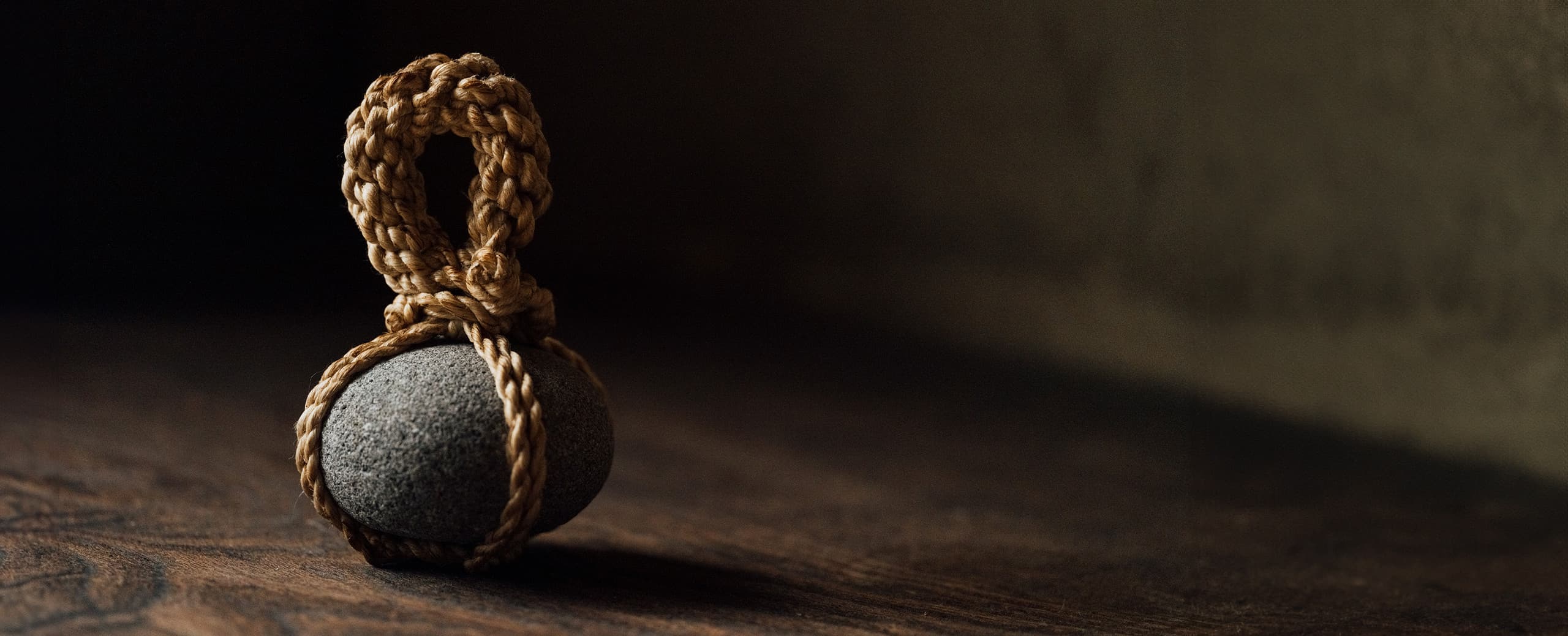
Ultimately, a stone is just a stone – until it’s bound by a simple string. In that moment, it becomes a barrier, defining a space and setting a boundary that exists as much in the mind as in the physical world. Yet eventually the rope frays, unravels and falls away, and the stone returns to nature, to its original, ordinary state. In this quiet cycle lies a deeper truth: that boundaries are illusions, upheld only by belief. True completion comes when the division dissolves and all things return to simply being what they are: a silent reflection of the oneness at the heart of Zen.
Through our ongoing collaboration with Tosei, his za kekkai stones occasionally appear in our Zurich store and online in limited drops – a fleeting chance to make one yours, as they rarely linger for long.